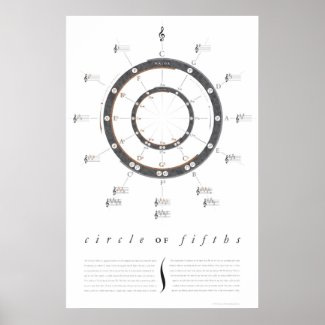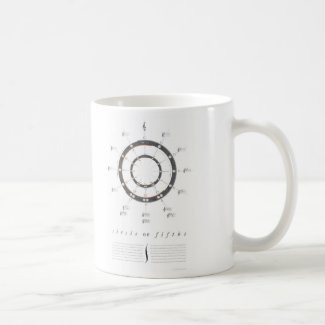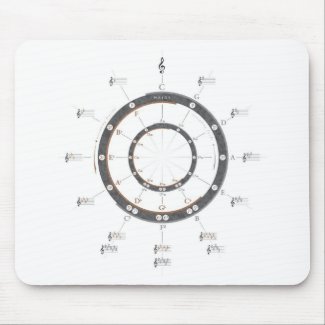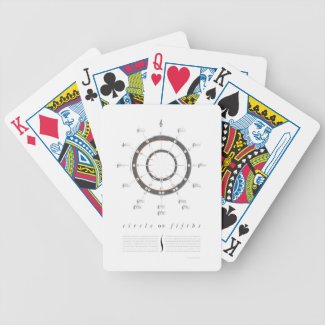How to Use the Circle of Fifths for Creating Killer Chord Progressions
If you're a musician, producer, or songwriter, you probably already know that creating killer chord progressions is an essential part of the music-making process. One tool that can help you with this is the Circle of Fifths. In this article, we'll take a deep dive into the Circle of Fifths and explore how you can use it to create amazing chord progressions.
What is the Circle of Fifths?
The Circle of Fifths is a visual representation of the relationship between the 12 notes in the Western music system. It's called the Circle of Fifths because each note is a fifth apart from the previous one as you move around the circle. The Circle of Fifths is a useful tool for musicians because it shows the relationships between the different keys and scales in music.
Understanding the Circle of Fifths
To understand the Circle of Fifths, you need to know a little bit about music theory. In Western music, there are 12 different notes, which are arranged in a repeating pattern called an octave. The notes are named A, A#, B, C, C#, D, D#, E, F, F#, G, and G#. Each note is a half step apart from the next one.The Circle of Fifths is based on the relationships between these 12 notes. If you start on C, which is the note in the middle of the circle, and move clockwise around the circle, you'll move up a fifth each time. So the next note is G, which is a fifth above C. The note after G is D, which is a fifth above G, and so on.
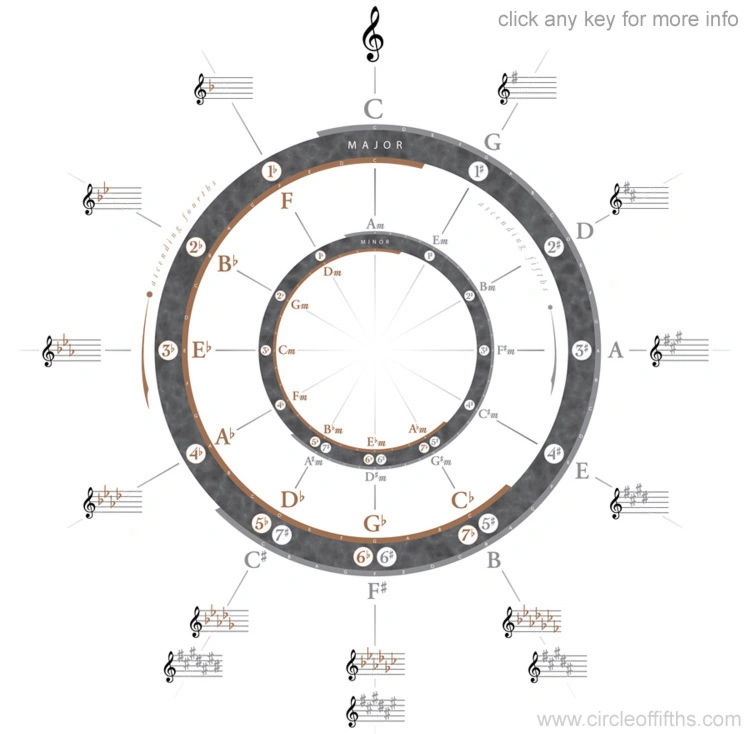
How to Use the Circle of Fifths for Chord Progressions
Now that you understand the basics of the Circle of Fifths, let's explore how you can use it to create killer chord progressions. One of the most common chord progressions in Western music is the I-IV-V progression. In the key of C, this progression would be C-F-G.To use the Circle of Fifths for chord progressions, start by choosing a key. Let's say we want to write a song in the key of G. Find G on the Circle of Fifths and then look at the notes immediately to the left and right of it. These are the notes that are a fifth below and a fifth above G.The note a fifth below G is D, and the note a fifth above G is C. These notes, along with G, form the I-IV-V chord progression in the key of G, which is G-C-D.You can use this same method to find chord progressions in any key. Start with the note you want to use as the root of your chord progression and look at the notes a fifth below and a fifth above it. These notes will form the I-IV-V chord progression in that key.
Conclusion
The Circle of Fifths is a powerful tool for musicians, producers, and songwriters. By understanding the relationships between the different keys and scales in music, you can use it to create killer chord progressions that will take your music to the next level. So if you're looking to up your music game, take some time to study the Circle of Fifths and see what you can come up with!
